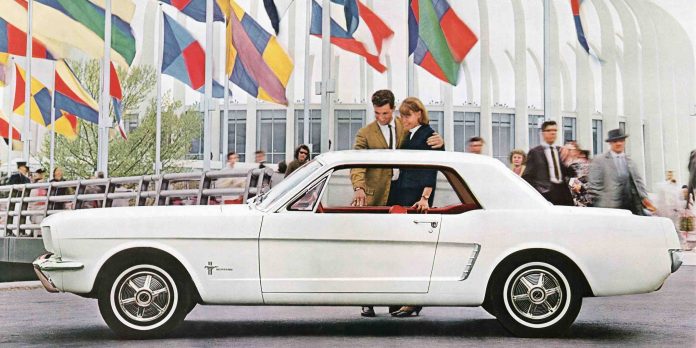
Posted on 01/24/2022 8:13:18 AM PST by Red Badger

In about two years from now, the Ford Mustang will be the last new car of its type still on the market – a fitting thing, given it was the first car of its type to come onto the market back in 1964. But it’s a sad communion – because it represents an end rather than a beginning.
One as unnatural as Joe Biden’s hairline.
The rivals whose existence the original 1964 Mustang prompted into existence – Chevy’s Camaro and the Dodge Challenger – are on their way out, again. Not because they aren’t selling but rather because forces conspire to make it impossible to sell them.
The same force that did it last time.
A force whose power always waxes and which has become irresistible.
It was possible, for awhile, to make due. To bob and to weave. To end-run.
Not anymore.
It’s all over, now. Electrification is unanswerable. It is a juggernaut of death rolling over the landscape. No one really wants it – but we’re all going to have it.
Courtesy of the force.
So, perhaps some fond memories are in order, first.
When the ’64 Mustang made its debut, there was no such thing as what subsequently became known as a “pony car.” As distinct from the muscle car, a species of performance car archetyped by the 1964 Pontiac GTO.
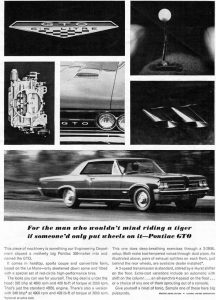
1964 was a great year for the car – and those who loved them.
The force was weak, then. Just the background noise made by misshapen homunculi such as Ralph Nader and his Center for Auto Saaaaaaaaaaaaafety. Americans weren’t much interested in such bed-wettery, then. But they made a mistake in not seeing the threat of the bed-wetters.
But it was hard to see that, back in ’64. The year of the pony car, which differed from a muscle car chiefly in that it could be muscular – for example, the 289 Hi Po and GT350 versions of the early Mustang – but it didn’t have to be. While the muscle car could not be sporty in the way the pony car was. Muscle cars were hulking, heavy things – generally based on existing two-door sedans like the Tempest (GTO). A big engine was fitted, along with various complementary performance upgrades and cosmetic embellishments while pony cars like the Mustang – and subsequently, Camaro and its cousin, the Pontiac Firebird – were smaller cars and built on dedicated platforms that may have shared bits and pieces with other cars but weren’t just hopped-up versions of an existing car.
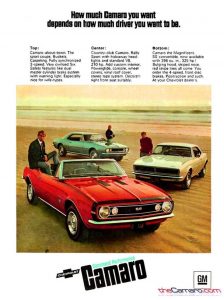
The Mustang was related to the Falcon, for instance. But it wasn’t a Falcon with a hot engine. It didn’t even come standard with a hot engine, another point of difference between a pony car and a muscle car, which always did because if it didn’t then it wasn’t a muscle car.
Pontiac never sold the GTO with anything less than a V8 engine. No muscle car ever came without one.
The ’64 Mustang came standard with an in-line six cylinder engine. You could upgrade to a V8, if you liked. But it wasn’t necessarily part of the package. And that was part of the Mustang’s much broader market appeal. The ’64 Mustang was a car for anyone – from the hot-shoe kid who finagled the purchase of a 289 Hi-Po to his mom, who bought a convertible with the in-line six.
When Camaro – and Firebird, Pontiac’s pony car entrant – came along in ’67, they emulated this example. There were versions of both to suit almost anyone, from the race ready Z-28 with its high-winding 302 cubic inch small block V8 that was paired only with a manual transmission to cruisers with gentle 350s paired up with smooth shifting automatics. There was some overlap with muscle cars, too, in that you could order up a Camaro with a big block V8 that was basically the same V8 Chevy installed in its Chevelle SS muscle car. Just in a smaller, more personal car.
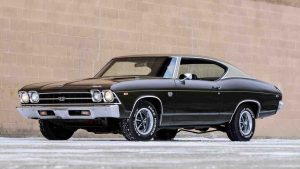
These cars became immensely popular, much more so than muscle cars, because of their greater flexibility and because they didn’t have to be muscular in order to be what they were. This stood them in good stead as the ‘60s transitioned into the ‘70s – and the force began to exert itself its malignant influence.
Muscle cars were ended when it became impossible, as a practical matter, to continue making them. The powerful V8s that defined them no longer were – and without them, a muscle car was just another car. Muscle cars disappeared for good after the 1974 model year – the catalytic converters that appeared the next year being the final nail in their coffin.

But pony cars made it through the gantlet.
Most of them, at least.
The Challenger was gone – also by ’74 – but Mustang, Camaro and Firebird persevered. Their powerful V8s were gone, too – but that was ok because it wasn’t absolutely essential to their existence. They still offered verve and style in all kinds of ways and that was badly lacking in the mid-’70s. These cars remained a tangible bridge to a past before the force became a presence in between the car buyer and his car. They actually began to sell better than they had in the ’60s, probably for just that reason and also because they now had the market for fun cars almost entirely to themselves.
Farrah drove a white Cobra II in Charlie’s Angels. Burt drove a black-and-gold Trans-Am in Smokey and the Bandit. Practically everyone wanted to drive one of these cars – and millions, literally, did.
This disturbed the force.
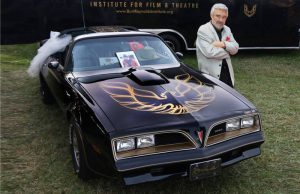
It applied the necessary corrective measures. The Trans-Am lost its Pontiac engines, which could no longer be made to pass muster and so were mustered out, in favor of Chevy engines. This foreordained the end of the Trans-Am and, in time, of Pontiac itself.
Camaro fell victim to a polarizing restyle in the early ’90s that turned it into what the muscle cars were, a car of limited appeal to mostly young guys – who were willing to put up with a hugely impractical car if it was fast and ballsy-looking. Everyone else, not so much – which led to the car’s initial cancellation in 2002.
It would however return – redesigned – for 2010.
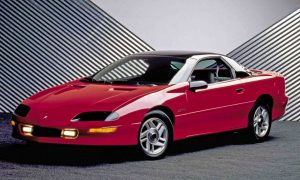
All the while, the Mustang remained. And still does, for now. But for how much longer?
Very soon, it will be be all-alone, again – only this time for entirely different reasons. The Challenger – which was always a kind of almost-muscle-car with pony-car attributes – is losing the Hemi V8 without which it is no longer what it was and for that reason no longer of much interest to those who wanted that, specifically. A V6/hybrid Challenger is expected to replace the current model; but while it may be a formidable performance car, it is not a muscle car or a pony car.
The Camaro seems to have no future at all – unless you can accept an electric sedan as a “Camaro.” That appears to be what GM has in mind after the last Camaro does the MacArthur fade-away come the 2024 model year.
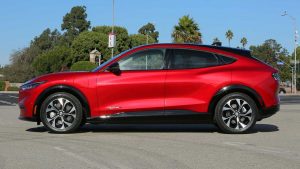
Ford seems to have a similar fate in mind for Mustang. It is already selling an electric crossover with the Mustang’s pony on its liftgate.
Say it ain’t so, Joe – except it already is.
All because of the force . . . emanating from the hair plugs of that thing angrily lisping about “climate change” – successor to “safety” and “emissions” – from its set-piece stage in the basement of the old folk’s home.
It has taken almost 60 years, from beginning to end.
And now, here we are.
No he owned it for a while. His parents moved and built the pole barn, then he drove it in
It’s more a true ignored car. He lives too far away to do any restoration himself and is too lazy to sell it.
I drive a 2015 Mustang GT with the Coyote V8 and I LOVE IT.
That said, a little bit of engineering trivia (you may already know it): One reason in-line six’s are very good is that this engine configuration is inherently balanced. Pretty much just put it together and it’s good. Very smooth. And, V-12’s are just two 6’s along side each other...
Yep, already knew it. It’s inherently stable.
My wife’s BMW has an in-line 6 and it’s smooth as silk........................when it runs....................
“I drive a 2015 Mustang GT with the Coyote V8 and I LOVE IT.”
After I retired in 2014 I got a 2016 Mustang, 6-speed manual transmission, 6-cylinder, 300hp Mustang in triple yellow. I LOVED it so MUCH 5,000 miles later I traded it in for a 2016 Mustang GT Premium.
THIS one was in competition orange with black stripes, 6-speed manual transmission and EVERY performance enhancing upgrade available !!!
It had 10,000 miles on it and I HAD to replace the straight pipe exhaust because it was scaring all the horses next door !!!
What a GREAT car - the LAST GREAT V-8 engine that will ever be made ( my car has the Gen 2 Coyote engine ).
This engine can wake the dead.
The Pinto just wouldn’t be the same without the exploding gas tank (That Ralph Nader assured us came as a standard feature)...
Nice!
Disclaimer: Opinions posted on Free Republic are those of the individual posters and do not necessarily represent the opinion of Free Republic or its management. All materials posted herein are protected by copyright law and the exemption for fair use of copyrighted works.